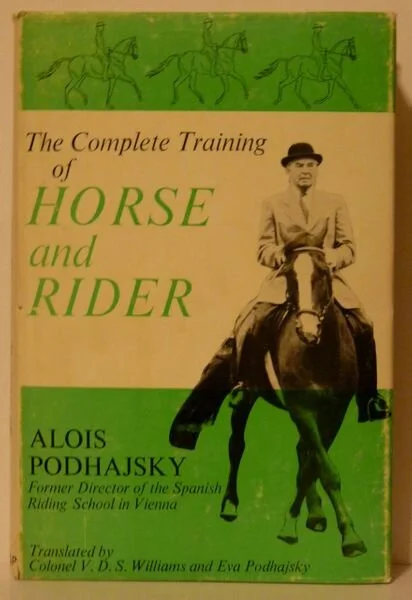Educating a horse is a long, slow progression of tiny lessons. Each lesson is only a paper-thin gap away from the previous lesson and from the next lesson. Each lesson is the building block for the next lesson to come. We shouldn’t progress to the next lesson until focus, clarity, and softness is consolidated in what our horse already knows. Holes left in the basic training lead to problems in the more advanced training.
As an example, teaching a horse or foal to be caught starts with being able to approach the horse without alarming it. Once this is established, the next lesson is a brief touch. Then move onto a longer sustained touch and slowly graduate to touching all over the horse. Then move onto touching with a rope before being about to place a halter on its head. And so on. Each step is established and consolidated with focus, clarity, and softness before moving onto the next step.
I don’t know any horse person who disagrees with this principle. I first read about this concept in Podhasjky’s book, “The Complete Training of Horse and Rider” (1967, pictured). Since then I have heard and read some version of this principle in almost every training book from the old masters to the modern masters of classical training. The essence of this message never wavers.
If this principle is so important that almost every trainer of repute teaches it, then how is it that somebody as skilled and revered as Nuno Oliveira would mount a horse that required a person to hold the horse still for him? Why would he mount a horse that he could not be confident would stand still? Surely this is a pre-requisite before mounting any horse.
How is it that I watched one of the most respected modern classical dressage trainers in the world (who I won’t name because it would cause a tirade of criticism) not be able to lead or lunge a young horse. Yet the horse was trained well enough to perform a half pass under saddle? How can someone so referred and admired for training at the highest levels of dressage not understand the basic principles of leading and lunging
Why was the horse of an Olympic dressage competitor not be able to stand still during the ribbon ceremony? How does one become one of the world’s top competitors, but fail to help their horse learn to feel okay when a judge pinned a ribbon on it?
Why did a Grand Prix dressage competitor send a horse to me for trailer loading training? How did they not know how to do this basic education while at the same time have the skill to train their horse to the peak level of dressage.
Why do the great classical works of Pluvinel, Baucher, Cavendish, etc, talk about obedience to the aids, but forget to mention the importance of teaching a horse to lead brilliantly or open a gate from the saddle or to pick up its feet softly for the groom or to stand quietly without cross ties (to name a few examples)?
It may seem like I am picking on dressage, but that’s because that’s my background and I know more about it. However, I have no doubt there is an equal failure in the revered works of western training, traditional Spanish horsemanship, vaquero training, Cossack horsemanship, Mongol horsemanship, etc.
If people really practiced what they preached they would not have mounted a horse that could not stand quietly. They would spend the 10mins or 10 days or however long it took, to get the horse emotionally prepared to be soft in the mounting process before even beginning the ride. And if the mounting issue stemmed from say the horse’s inability to feel okay to be caught, that’s where the session should begin. Missing those steps is a disservice to every horse even if it is capable of performing a levade with a ‘wow’ factor.
I respect and admire horse people who know so much and have so much skill that they can train at an elite level. But it makes me want to cry when I see them lead a horse like it was their first horse or struggle to help a horse that is worried to walk through the arena gate. Many of my regular students could help their horses better. If they truly believe the basics are so important to the more advanced training, how can they skip so many of the basics and fail the horses so miserably?

